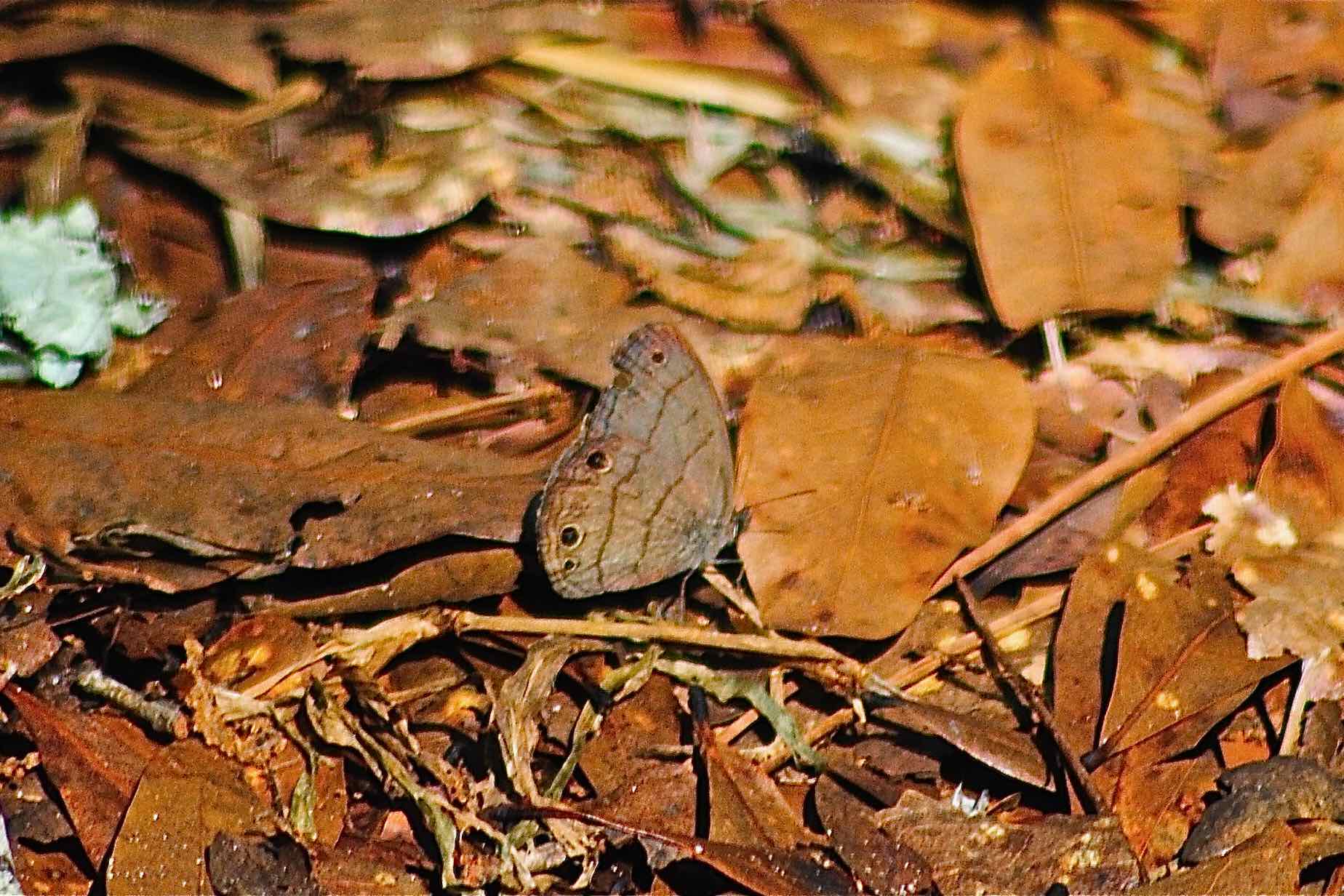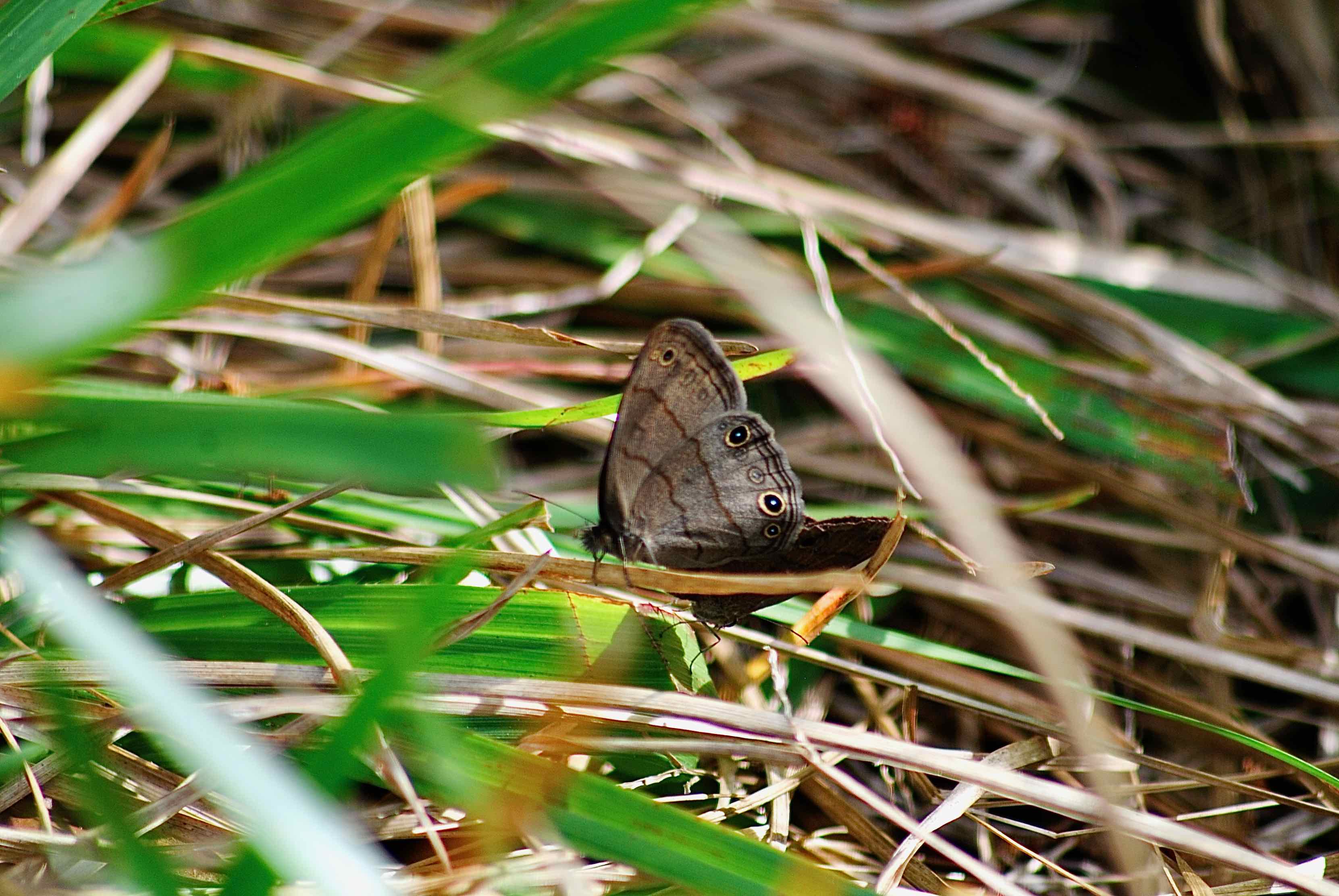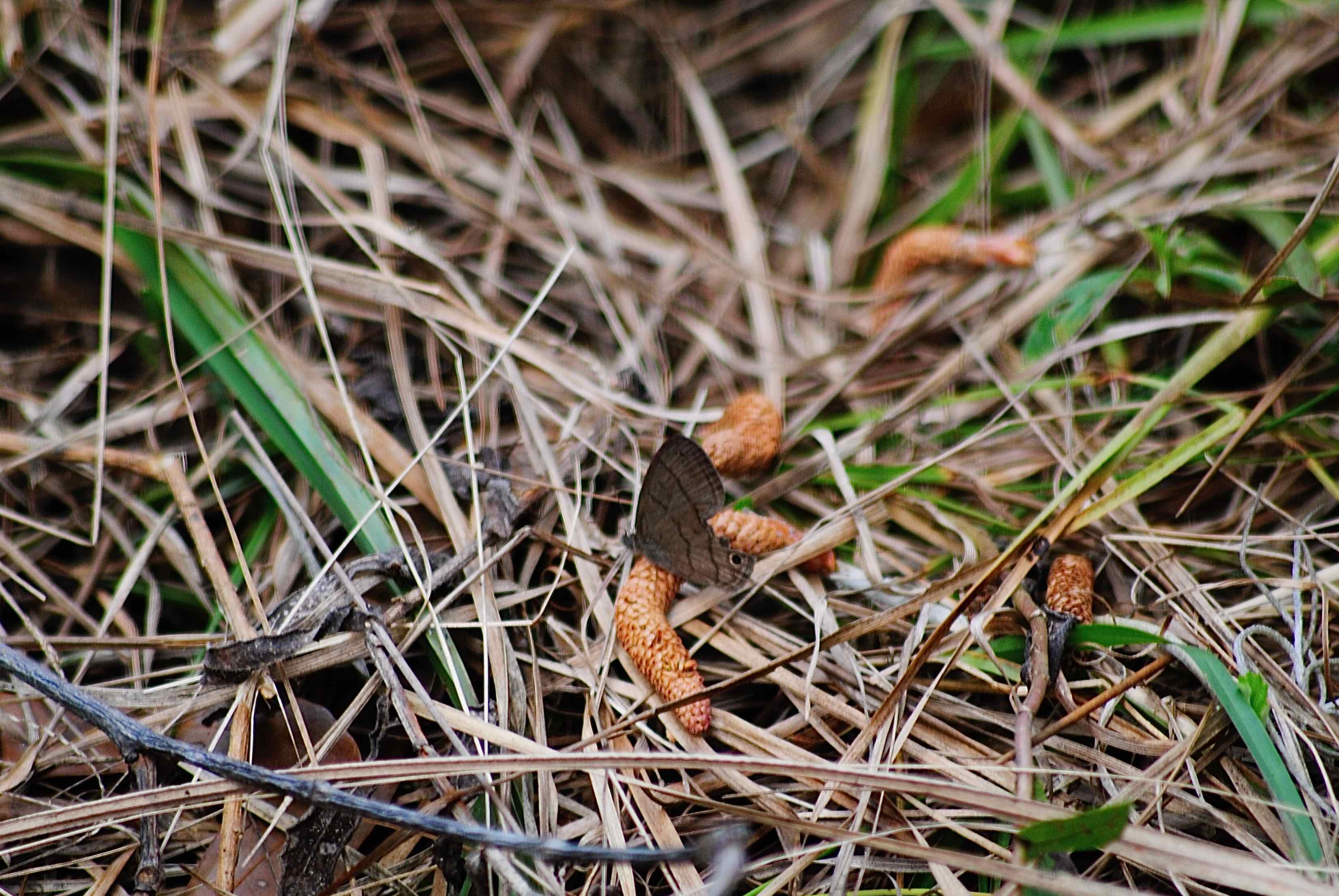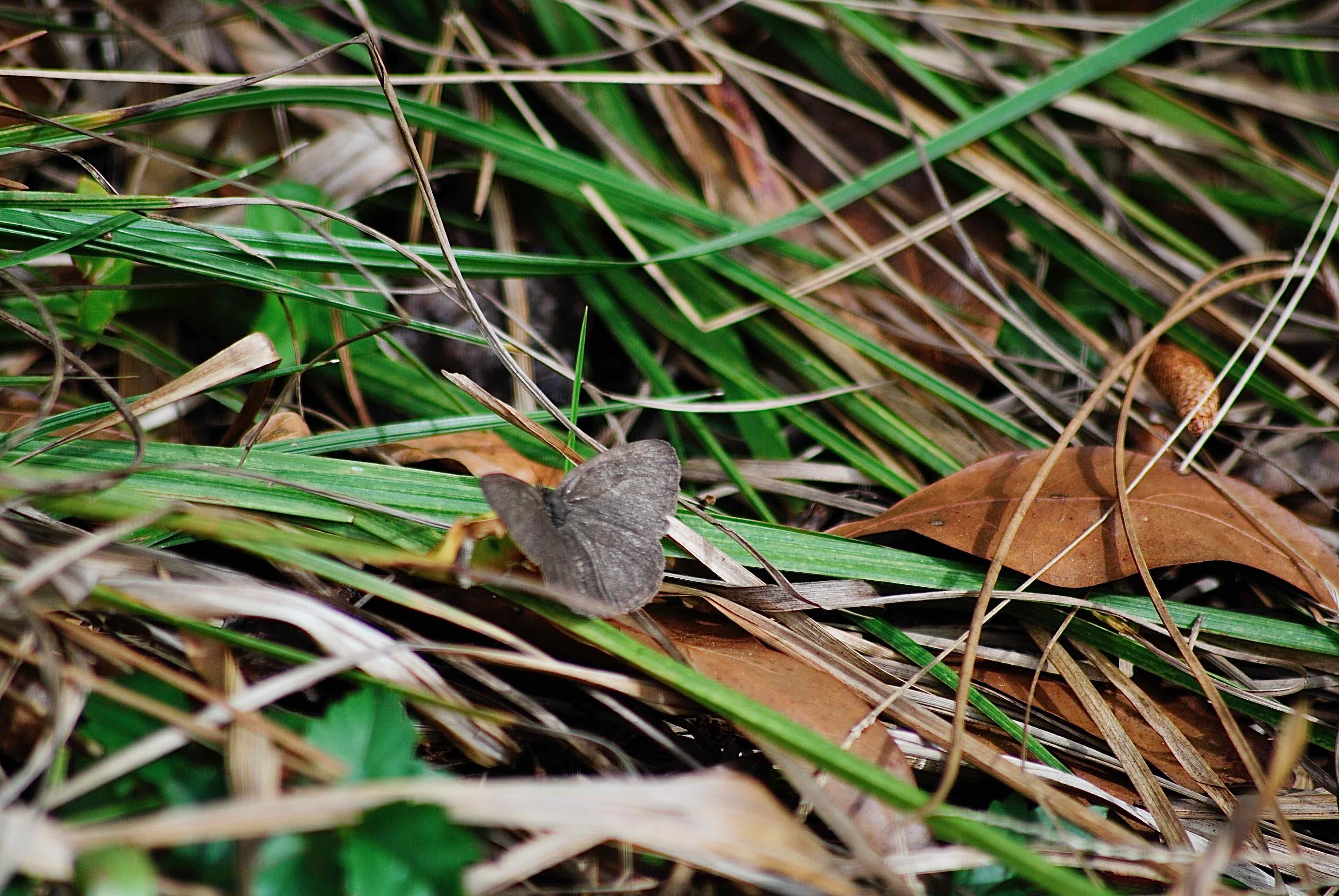
Carolina satyr, photographed at Cypress Creek Natural Area North, Jupiter, Palm Beach County, in February 2015.
When it came time to dishing out color, the Carolina satyr, Hermeuptychia sosybius, must have been at the very end of the line. It's best described as dull brown. The dullest of dull browns, in fact.
The Carolina satyr is a denizen of forests, found throughout much of the eastern and central United States, from New Jersey to Kansas to Texas to Florida. It's also found in Mexico, and occasionally, in parts of Central America. In Florida, it's common throughout both the Panhandle and Peninsula. It is the most common of the eight satyr butterflies found in Florida.
It is a small butterfly, with a wingspan of an inch-and-a-half. The upper side of the wings is brown, with no obvious markings. Distinctively indistinct, we'd called it. The underside has a series of prominent eyespots with a yellow rim, one on the forewing, three on the hindwing. It also has two irregular dark lines that are vertical when the wings are folded up. Carolina satyrs can vary in their looks accordng to the season — larger bodies and smaller eyespots in the spring, smaller bodies with larger eyespots in the summer. Male and female Carolina satyrs are identical.
In cooler parts of its range, the Carolina satyr produces three generations betwen April through October. In South Florida and other places where temperatures remain warm throughout the year, they remain active and produce more than three broods. Various grasses serve as host plants for the caterpillars. Females lay eggs singly on the leaf blades; the larvae are a whitish green with a dark head, becoming darker green as they eat the leaves of their host. They'll go through four instar, or development, stages before pupating, or going through the cocoon stage. Adults, meanwhile, feed on tree sap and decaying fruit. Yum. They occasionally will visit flowers.
Fun fact No. 1: In Greek and Roman mythology, a satyr is a minor diety that hangs out in the woods and is often drunk.
Fun fact No. 2: Researchers in Texas studying the genetics of the Carolina satyr recently discovered not one, but two new species of butterflies. Wing patterns of the Carolina and another satyr butterfly were nearly identical, but according to an account in Entymology Today, the genitalia — you read right — of the two were vastly different. They named the new species H. intricata, the Intricate satyr. DNA testing of another similar looking butterfly turned up the second new species. Researchers named it the south Texas Satyr, H. hermybius. Admittedly, we did not check the genitalia of the butterflies we saw, nor did we do any DNA sequencing. We're fairly sure nonetheless that these are Carolina satyrs. But who really knows?
By the way, Carolina satyrs are members of Nymphalidae, the brushfoot family.
Cypress Creek Natural Area North



